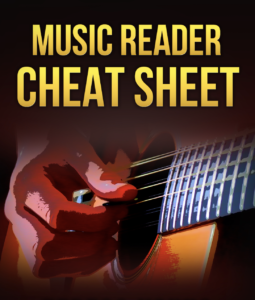Teresa Young’s sheet music
Welcome to the home page for Teresa Young‘s growing collection of downloadable sheet music. Genres includes pop, rock, jazz, traditional and sacred pieces. A majority are instructional, for pianists and vocalists in training of all ages. Instructional piano pieces include fingerings.
Lead sheets/fake book pieces in all genres are here too. Many arrangements of all types also include guitar chord diagrams.
— PIANO & VOCAL —
Great Balls of Fire ~ Miles Teller
I Go to the Barn Because I Like The ~ Band of Horses
I’ll Stand by You ~ The Pretenders
Little Saint Nick ~ The Beach Boys
Love Like You (End Credits) ~ Steven Universe
(Somewhere) Over the Rainbow ~ Judy Garland
The Rainbow Connection ~ Jim Henson
This Little Light of Mine ~ Traditional
Wintertime is Jam Time ~ Blues for Kids
— SOLO PIANO —
Nights in White Satin ~ The Moody Blues
The State of Dreaming ~ Marina and the Diamonds
Trumpet Voluntary ~ Easy Piano
— LEAD SHEETS/FAKE BOOK —
Everything Happens for a Reason ~ Madison Beer
Freedom Fight Song (lead sheet)
Gee Baby, Ain’t I Good to You ~ Ella Fitzgerald
I Go to the Barn Because I Like The ~ Band of Horses
I’ll Be Your Baby Tonight ~ Bob Dylan
If He Change My Name ~ Marian Anderson
Is You Is or Is You Ain’t My Baby
Long Time Gone ~ Crosby, Stills & Nash
To Catch a Thief ~ Nathaniel Merriweather
Walkin’ After Midnight ~ Patsy Cline
Wintertime is Jam Time ~ Blues for Kids
You Sent Me Flying ~ Amy Winehouse
— SACRED/CHORAL —
Psalm 69 ~ Lord, in Your Great Love
Psalm 126 ~ The Lord Has Done Great Things for Us
Acclamations to Accompany the Stations of the Cross
Three Acclamations to Accompany the Reading of the Passion
If He Change My Name ~ Marian Anderson
— OTHER —
Teresa’s growing collection of published sheet music includes a wide range of genres and skill levels.
You’ll find pop, rock, jazz, traditional, and sacred pieces in her collection, from Steven Universe, Billie Eilish , LP, and Marina to Bob Dylan, The Moody Blues, David Crosby, JVKE, Lou Reed, Miles Teller from Top Gun: Maverick, Frank Sinatra, and Psalm 126!
So keep checking back here for more.
Be sure to check back here for more of Teresa Young’s downloadable sheet music published regularly.
Or get in touch!
Also, if you’re looking for a favorite piece to interpret and not finding an existing version that feels right for you, get in touch with Teresa here to request a custom arrangement.
Music is life itself.
—Louis Armstrong
Finally, an intriguing excerpt follows from The Benefits of Playing Music Help Your Brain More Than Any Other Activity, by John Ramptan, Entrepreuner and Investor, published in Inc. Magazine, August 21, 2017
Why Being a Musician Is Good for Your Brain
Science has shown that musical training can change brain structure and function for the better. It can also improve long-term memory and lead to better brain development for those who start at a young age.
Furthermore, musicians tend to be more mentally alert, according to new research from a University of Montreal study.
“The more we know about the impact of music on really basic sensory processes, the more we can apply musical training to individuals who might have slower reaction times,” said lead researcher Simon Landry.
“As people get older, for example, we know their reaction times get slower,” said Landry. “So if we know that playing a musical instrument increases reaction times, then maybe playing an instrument will be helpful for them.”
Previously, Landry found that musicians have faster auditory, tactile, and audio-tactile reaction times. Musicians also have an altered statistical use of multisensory information. This means that they’re better at integrating the inputs from various senses.”Music probably does something unique,” explains neuropsychologist Catherine Loveday of the University of Westminster. “It stimulates the brain in a very powerful way because of our emotional connection with it.”
Unlike brain games, playing an instrument is a rich and complex experience. This is because it’s integrating information from the senses of vision, hearing, and touch, along with fine movements. This can result in long-lasting changes in the brain. These can be applicable in the business world.
Changes in the Brain
Brain scans have been able to identify the difference in brain structure between musicians and non-musicians. Most notably, the corpus callosum, a massive bundle of nerve fibers connecting the two sides of the brain, is larger in musicians. Also, the areas involving movement, hearing, and visuospatial abilities appear to be larger in professional keyboard players.
Initially, these studies couldn’t determine if these differences were caused by musical training or if anatomical differences predispose some to become musicians. Ultimately, longitudinal studies showed that children who do 14 months of musical training displayed more powerful structural and functional brain changes.
These studies prove that learning a musical instrument increases gray matter volume in various brain regions, It also strengthens the long-range connections between them. Additional research shows that musical training can enhance verbal memory, spatial reasoning, and literacy skills.
Continue this great article here.
A composer is a guy who goes
around forcing his will on
unsuspecting air molecules,
often with the assistance
of unsuspecting musicians.
—Frank Zappa


